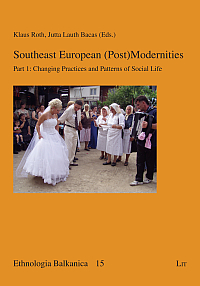Le café au croisement des deux mondes. Exemple d’une acculturation volontaire dans la ville de Bucarest au XIXe siècle
Coffee Culture at the Crossroads of Two Worlds: An Example of Voluntary Acculturation in 19th Century Bucharest
Author(s): Irina StahlSubject(s): Anthropology
Published by: LIT Verlag
Keywords: Romania; Bucharest; coffee; coffee culture; 19th century; acculturation
Summary/Abstract: In this article the author analyses the emergence and evolution of coffee drinking and coffee houses in the urban setting of Bucharest, the capital of Wallachia, until the year 1900. Coffee culture in nineteenth-century Bucharest provides an example par excellence of voluntary acculturation. In this important cultural and trading centre in Southeast Europe, located between the Orient and the Occident, people adopted aspects of coffee culture from both sides. Nathan Wachtel has urged fellow historians to study processes of acculturation because a diachronic approach allows for an improved understanding of evolution and change. A historical perspective on the phenomenon of voluntary acculturation thus has an advantage over the predominantly synchronic approach to acculturation by ethnologists focussing on a moment in time. The dynamics of voluntary acculturation are clearly shown by the twofold appropriations of the global commodity of coffee in the nineteenth century : these cultural expressions of coffee culture provide a window on Bucharest society at the time. At first a luxury product used at the court, its conspicuous consumption (Veblen) served to underline the high social status of the ruling class. Next, when prices dropped, the middle classes adopted the ritual of coffee drinking, coffee houses becoming their most prominent places for social interaction. In this development coffee culture shifted from the private to the public space. Another dynamic in the push for modernization of city life was the subsequent appropriation of both oriental and occidental coffee culture, demonstrating the change in orientation over the generations. In this process oriental coffee places became gradually marginalized both in time and space. The article shows how the coffee house as an important urban institution evolved as a voluntary acculturation at the crossroads of two worlds.
Journal: Ethnologia Balkanica
- Issue Year: 2011
- Issue No: 15
- Page Range: 63-92
- Page Count: 30
- Language: French
- Content File-PDF

